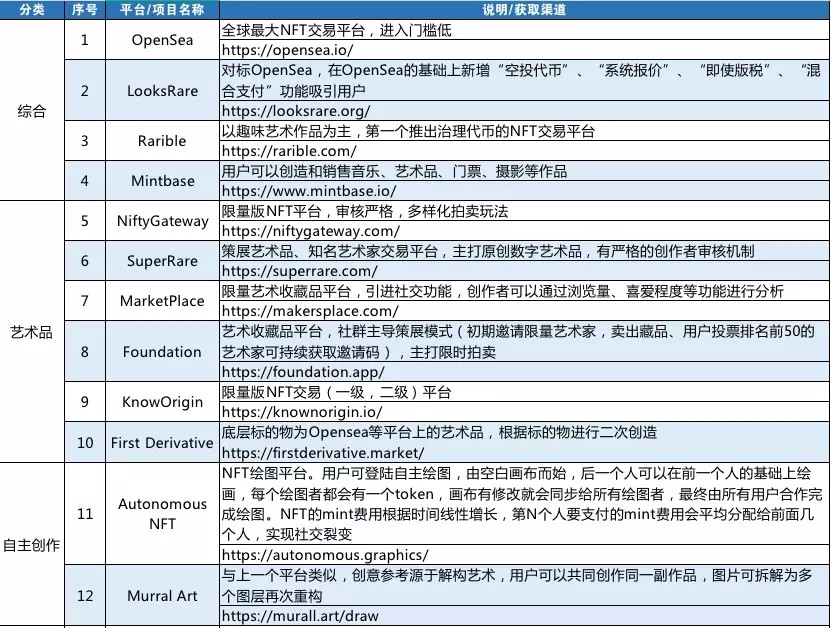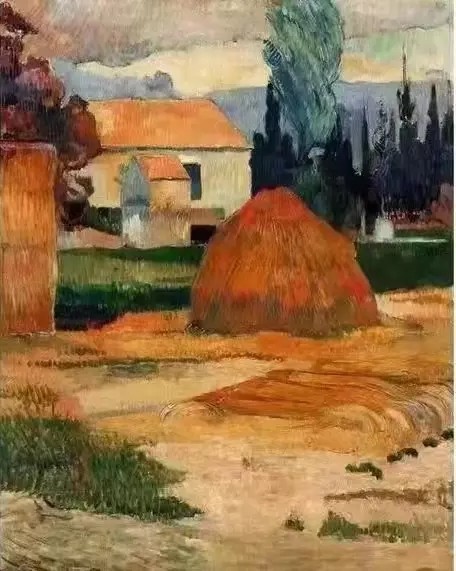 2022-03-14
2022-03-14

Introduction
With the accelerated development of the global digital economy, the concept of encrypted assets and the metaverse is booming. Since 2021, NFT has ushered in explosive growth and has gradually become one of the hottest investment bellwethers in the market. Artist Beeple's NFT work "Everydays: The First 5000 Days" sold for $69,346,250 on Christie's official website, and a piece of virtual land on the virtual game platform Sandbox sold for $4.3 million. The endless high-priced projects continue to stimulate people's nerves. However, it is against this background that the Arles Landscape Platform was born. Under the halo of high price, what exactly is NFT? How is the development status? What NFT platforms are there on the market? What is the Arles Landscape Platform?This article will try to sort out the relationship between the concept of NFT and the landscape of Arles from these aspects.
1. What is NFT
NFT (Non-Fungible Token) is a unique digital certificate registered on the blockchain. It has the characteristics of uniqueness, immutability, and verifiability. It can be understood as "virtual assets or physical assets. Digital Proof of Stake". In order to avoid suspicion of speculation, domestic platforms usually refer to NFTs as "digital collections" in their promotion and dissemination. Unlike traditional copyright protection. The NFT token directly signs the content of the digital product and publishes the signature certificate on the blockchain ledger. In this way, the NFT is permanently attached to the digital artwork, marking it as original, official and unique. Buyers can have proof of authenticity and sole ownership through NFTs, even if replicas exist on hard drives and servers around the world. NFTs provide a way to mark ownership of native digital assets.
2. NFT properties
NFT has the characteristics of unique, verifiable, transparent and open, immutable and indivisible:
(1). Uniqueness: NFTs are issued in the form of smart contracts, which record the unique Token ID, resource storage address and various information of each NFT, and each NFT is unique on the blockchain;
(2). Verifiability: Based on the storage function of the blockchain, NFT and its metadata and ownership can be traced to the source of information and can be publicly verified;
(3). Transparent and open: NFT-related issuance and purchase records can be publicly queried on the chain, and each NFT contains the latest ownership information, which is open and transparent to users;
(4). Immutability: According to the characteristics of the blockchain, NFT metadata and its transaction records are continuously stored, and once the transaction is confirmed, it cannot be manipulated or tampered with;
(5). Indivisible: NFT data is stored on the blockchain through smart contracts and is indivisible. Each NFT has fixed information and cannot be divided at will.
3. NFT development history
The history of NFT can be traced back to the concept of encrypted transaction card proposed by Hal Finney in 1993, but due to the limitations of technological development at that time, NFT only stayed in the theoretical embryonic stage. In June 2017, CryptoPunks, the world's first NFT project, was released on Ethereum. In the same year, a game called CryptoKitties launched by the Dapper Labs team first introduced the concept of "NFT". From 2018 to 2020, the NFT ecology has grown substantially on a large scale. The user base and technological innovation have brought more gameplay to the NFT project, and NFT platforms represented by OpenSea and Rarible have been developed. The application fields involve games, artworks, collectibles, Music and more. In March 2021, the digital art work "Everydays: The First 5000 Days" by artist Mike Winkelmann (Beeple) was sold at Christie's, a famous British auction platform, at a price of US$69.34 million, successfully triggering a boom in digital art and the NFT industry. Gradually moved towards the stage of rapid expansion.
4. Collection of international NFT platforms
At present, the NFT distribution models of domestic and foreign platforms are mainly divided into the PGC (Professional Produced Content) model and the UGC (User Produced Content) model.
The creators of the PGC model are usually teams or individuals with professional knowledge, and the platform jointly issues NFTs through cooperation with artists and museums. Representative platforms such as: Ant Whale Scout, Tencent Magic Core, Jingdong Lingxi, etc.
The author of the UGC model is mainly composed of ordinary users. The platform allows ordinary users to create content independently by giving users the right to speak and opening platform functions. Representative platforms such as: OpenSea, Mintbase, encrypted space, etc.

5. Introduction of Arles Landscape Platform

The Arles landscape platform focuses on digital artworks. The total number of NFT tokens for digital artworks is only 10 million, with a starting price of 1$. It is used to participate in the circulation and transaction of digital artworks on the platform. The digital art investment market is an internationally recognized three investment market, second only to real estate and stocks. According to the survey, the global art investment market that can be further tapped is about 6 trillion, and the art market has huge potential.
Investment trend of NFT: With the continuous application of blockchain technology and the recognition of virtual digital technology in various countries, major auction houses in Europe and Hong Kong, such as Christie’s, will start to enter the NFT digital art auction on a large scale in August 2021. The market is huge, with tens of millions of collector investors, and a trillion-level stock market. Online transactions are convenient and efficient, which solves the problem that traditional artworks can only be traded offline.
The world art market will usher in a golden 10 years after the in-depth adjustment. The leading enterprises that regulate the management of cultural art will be the leading enterprises. The financialization and capitalization of art will become the main direction of art development, and there will be tens of thousands of art derivatives. In the market of RMB 100 million, artworks began to be integrated into the homes of ordinary people. Scarce artworks will become an important option for cultural families and wealthy families to allocate assets, which is conducive to wealth preservation and appreciation! Arles Landscape Digital Art NFT will become the main force in the art market! And all the works of Arles Landscape are traded on the European international cultural exchange platform. It is expected that the European Cultural Exchange will be launched in mid-March.
The European Cultural Exchange (IAE for short) is headquartered in Cyprus, established in 2017 and holds licenses 1, 4 and 9 issued by the Hong Kong Securities and Futures Commission. It is a professional stamp and oil painting exchange. With the development of NFT technology, the company is committed to creating a professional, efficient and digital collection platform.
The advantage of Euronext is that firstly, it has mature blockchain technology, which provides technical support for the confirmation and circulation of artworks; secondly, there are rich gameplay and modes, fictitious objects, artwork patent intellectual property rights, domain names, etc., all things All can be NFT; the third traditional artwork, the cultural relics investment threshold is high, and the large amount of products can be divided into multiple shares through the blockchain token technology to reduce the entry threshold. Its value lies in Internet transactions, high efficiency and convenience, solving the problems of circulation, realization and investment in the art market, giving full play to the financial attributes of artworks, and generating value from transactions.
The partners of the European Cultural Exchange have participated in more than 20 platform investors, and more than 100 art collections have been collected by the collectors (the collections are worth 1.8 billion). With 15,000 members and players, licensed business qualifications are guaranteed, anonymous transactions on the e-commerce platform ensure the safety of funds, and the "three public" principles are adhered to: openness, fairness, and justice!
With the development of blockchain technology and the continuous expansion of the NFT market, the domestic NFT market has developed rapidly, showing a trend of entertainment IP gradually entering the market and traditional enterprises entering the market one after another. Among them, there are not many teams that rely on the influence of IP to enrich profits, and some try to take advantage of them. Enterprises that are driven by the east wind and realize digital transformation. At present, all parties are still in the exploratory stage, and Arlesjing is the first to try. Looking at the projects we have seen now, it may only be the starting point of NFT. , On the basis of technical support, formulating a standardized operation system, realizing the practical value of NFT, protecting the rights and interests of relevant interest groups, and forming a value consensus are all issues worthy of common discussion in the industry. Looking forward to NFT on the road of combining with the industry, further deviating from the virtual to the real, and moving steadily and far!